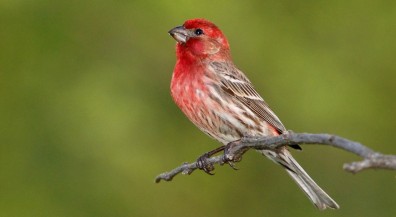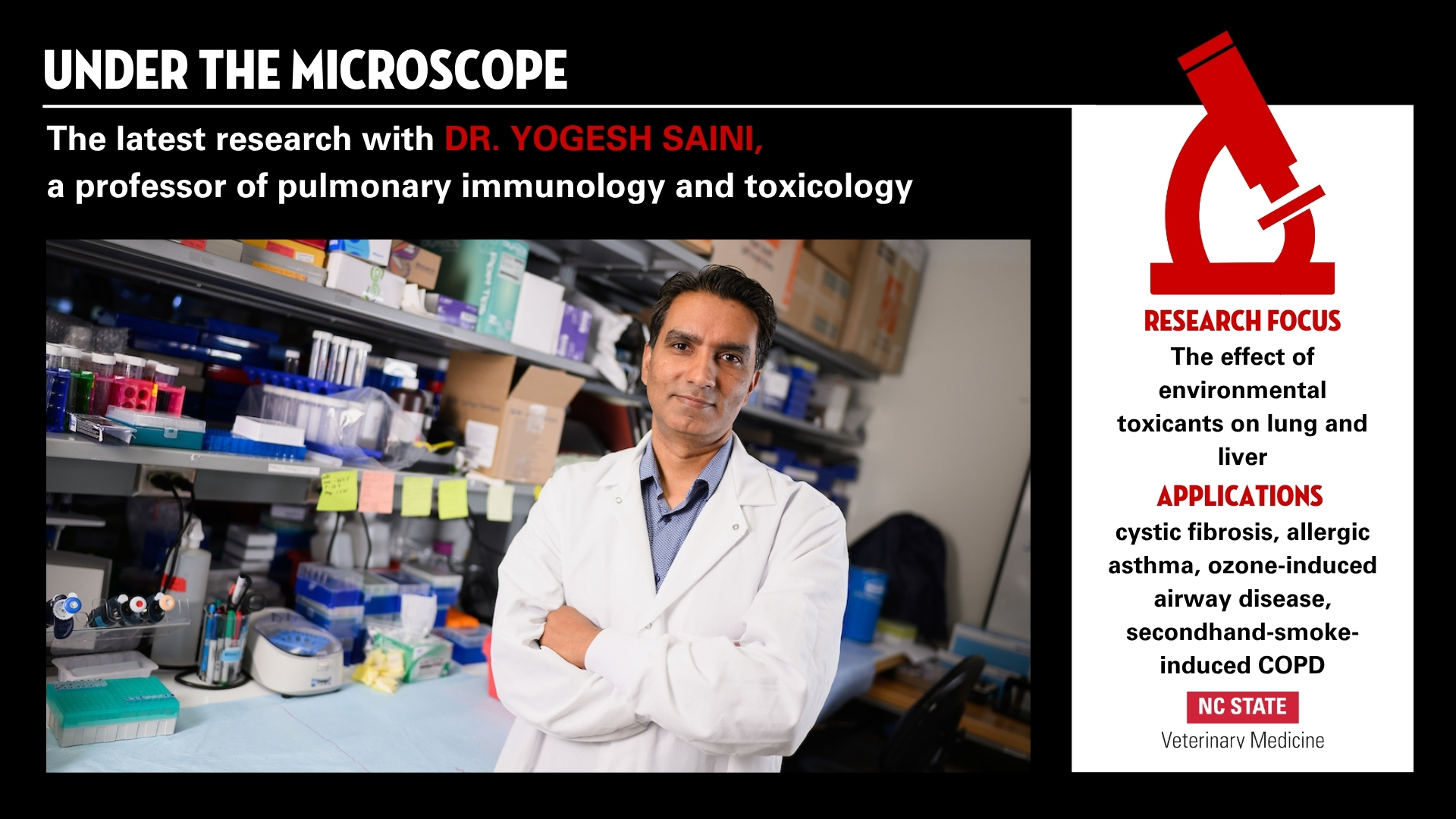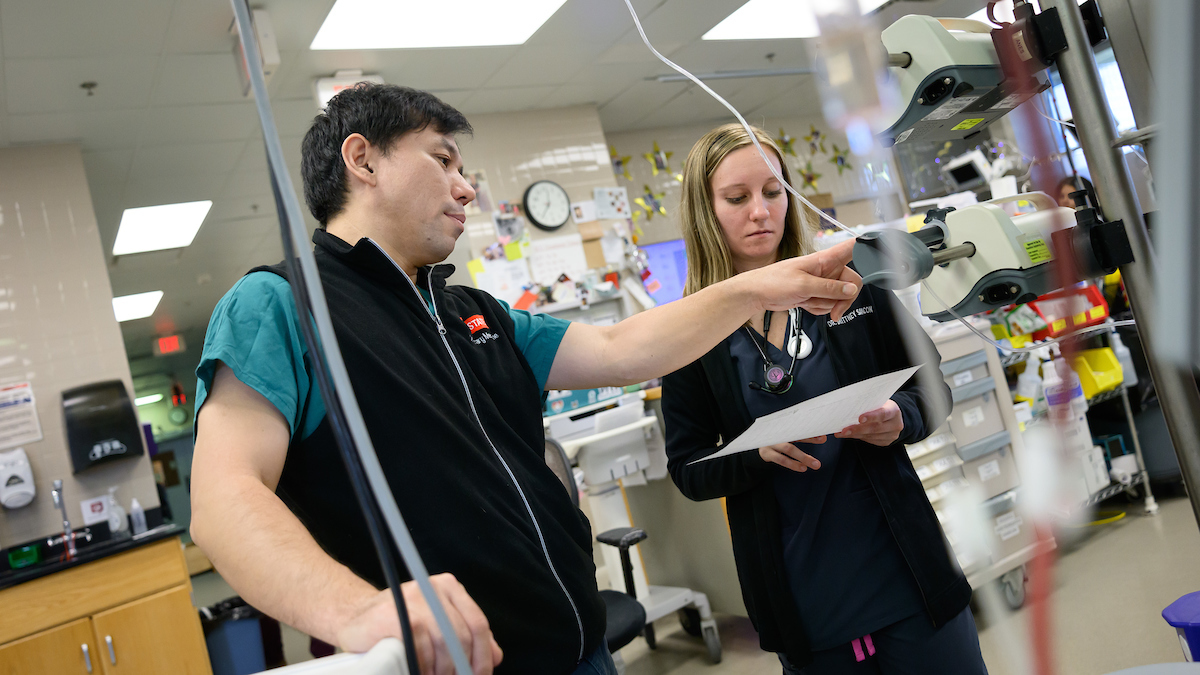House Finch Disease Helps Researchers Better Understand Spread of Contagious Human Diseases

A unique form of pink eye found in some songbird species has given researchers insight into how disease virulence – or severity of harm to the host – evolves in conjunction with a susceptible population’s density and/or disease resistance. These findings may help scientists understand and predict the impacts of highly contagious human diseases, like SARS or flu.

Mycoplasma gallisepticum (MG) is a bacterium that emerged on the East Coast in 1994 as a cause of pink eye, or conjunctivitis, in house finches and has since spread across the U.S. David Ley, a professor of poultry health management at North Carolina State University’s College of Veterinary Medicine, has studied MG for decades, since in North Carolina it has also been found in poultry. When house finches first showed signs of the disease, Dr. Ley identified MG as the cause, collected samples of the pathogen from infected birds and preserved them for future study.
Ornithologist Dana Hawley and ecologist André Dhondt, from Virginia Tech and Cornell University, respectively, were interested in how MG had spread across the country’s house finch populations and wanted to understand its evolution. Using samples of the bacterium taken from the Eastern and Californian house finch populations that Dr. Ley had collected between 1994 and 2010, the team of researchers – which also included Cornell University’s Wesley Hochachka and Princeton’s Andrew Dobson – found that the virulence of MG had increased over time in both locations.
In both locations the disease was less virulent when it emerged and established itself in areas with high populations of susceptible finches. However, as the disease caused the populations to decrease and immunity within the remaining populations increased, the bacteria responded by becoming more virulent, with higher pathogen loads to overcome immunity and sustain transmissibility.

Dr. Ley, a member of the Department of Population Health and Pathobiology, believes that this study of house finch eye disease provided a unique opportunity to understand the evolution of virulence in emergent diseases. “We were able to identify a new MG disease in a free-ranging population early on, and study it over time, location and host species,” he says. “Now we can see if similar patterns occur across other infectious diseases, and what that may mean for our ability to understand factors that drive virulence evolution both naturally and perhaps even in response to treatments and vaccinations.”
The researchers’ results appear in PLOS Biology. Dr. Hawley is lead author. The research was funded by grants from the National Science Foundation, the National Institutes of Health and the U.S. Department of Agriculture.
[section_subtitle] “Parallel Patterns of Increased Virulence in a Recently Emerged Wildlife Pathogen” [/section_subtitle]
Published: PLOS Biology
Authors: Dana M. Hawley, Virginia Tech; André A. Dhondt, Andrew P. Dobson and Wesley M. Hochachka, Cornell Lab of Ornithology; Erik E. Osnas, Princeton University; David H. Ley, North Carolina State University
[section_subtitle] Abstract: [/section_subtitle]
The evolution of higher virulence during disease emergence has been predicted by theoretical models, but empirical studies of short-term virulence evolution following pathogen emergence remain rare. Here we examine patterns of short term virulence evolution using archived isolates of the bacterium Mycoplasma gallisepticum collected during sequential emergence events in two geographically distinct populations of the host, the North American house finch (Haemorhous [formerly Carpodacus] mexicanus). We present results from two complementary experiments, one that examines the trend in pathogen virulence in eastern North American isolates over the course of the eastern epidemic (1994–2008), and the other a parallel experiment on Pacific coast isolates of the pathogen collected after M. gallisepticum established itself in western North American house finch populations (2006–2010). Consistent with theoretical expectations regarding short-term or dynamic evolution of virulence, we show rapid increases in pathogen virulence on both coasts following the pathogen’s establishment in each host population. We also find evidence for positive genetic covariation between virulence and pathogen load, a proxy for transmission potential, among isolates of M. gallisepticum. As predicted by theory, indirect selection for increased transmission likely drove the evolutionary increase in virulence in both geographic locations. Our results provide one of the first empirical examples of rapid changes in virulence following pathogen emergence, and boththe detected pattern and mechanism of positive genetic covariation between virulence and pathogen load are consistent with theoretical expectations. Our study provides unique empirical insight into the dynamics of short-term virulence evolution that are likely to operate in other emerging pathogens of wildlife and humans.
[section_subtitle] For more information: [/section_subtitle]
Dr. Ley recipient of national award for career excellence in research.
- Categories:


